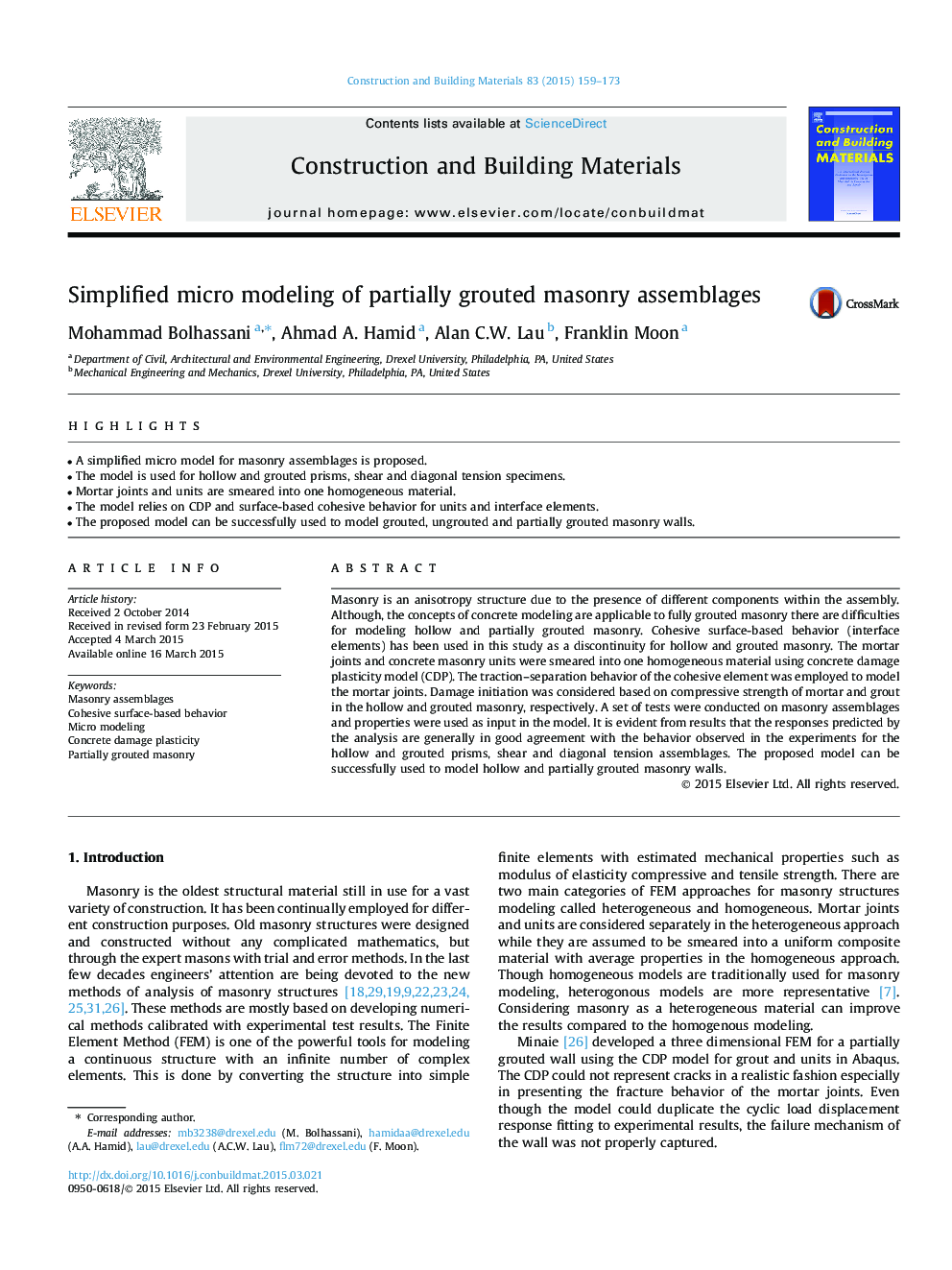| Article ID | Journal | Published Year | Pages | File Type |
|---|---|---|---|---|
| 6720933 | Construction and Building Materials | 2015 | 15 Pages |
Abstract
Masonry is an anisotropy structure due to the presence of different components within the assembly. Although, the concepts of concrete modeling are applicable to fully grouted masonry there are difficulties for modeling hollow and partially grouted masonry. Cohesive surface-based behavior (interface elements) has been used in this study as a discontinuity for hollow and grouted masonry. The mortar joints and concrete masonry units were smeared into one homogeneous material using concrete damage plasticity model (CDP). The traction-separation behavior of the cohesive element was employed to model the mortar joints. Damage initiation was considered based on compressive strength of mortar and grout in the hollow and grouted masonry, respectively. A set of tests were conducted on masonry assemblages and properties were used as input in the model. It is evident from results that the responses predicted by the analysis are generally in good agreement with the behavior observed in the experiments for the hollow and grouted prisms, shear and diagonal tension assemblages. The proposed model can be successfully used to model hollow and partially grouted masonry walls.
Keywords
Related Topics
Physical Sciences and Engineering
Engineering
Civil and Structural Engineering
Authors
Mohammad Bolhassani, Ahmad A. Hamid, Alan C.W. Lau, Franklin Moon,
